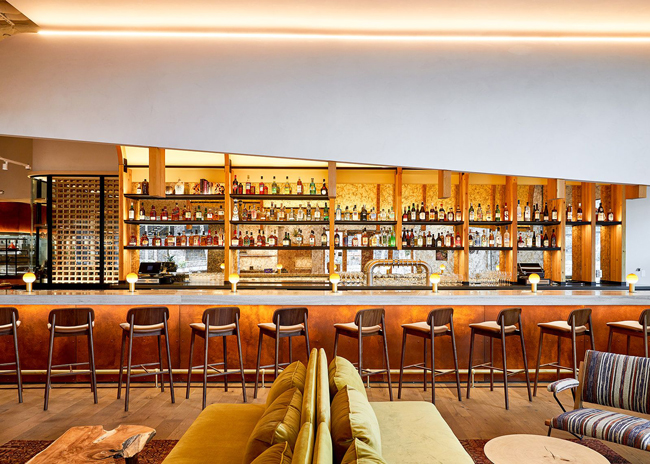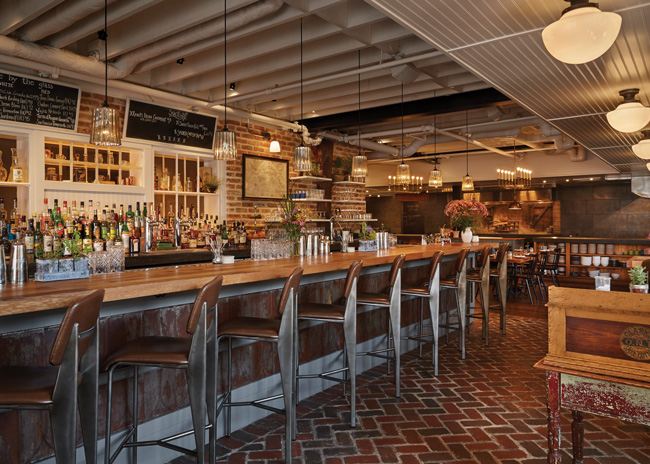In the restaurant industry, one should never underestimate the power of a good first impression. More often than not, it’s the exterior signage that will help draw customers into an establishment. Serving double duty, effective outdoor signs not only advertise the name of the restaurant but are also a direct reflection of its brand, providing insight into what diners can expect inside.
With a casual or formal design, traditional or modern fonts and accompanying graphics or logo, signs provide a prime opportunity for restaurant operators to get the word out and get people in the door.
Outdoor signage also can be directional and informational, designating entrances, pick up areas, drive-thru lanes and hours of operation.
The area will impact the type of outdoor signage that is appropriate. While a suburban setting may require a large and colorful sign visible to passing motorists to compete with neighboring eateries, a city restaurant’s signage will likely be smaller, gearing graphics toward pedestrian sight lines.
Signage can be located on the building’s facade nearest the entrance or by roadways and freeways on monuments or pole signs. Signs printed on canopies or situated on walkways also are popular.
Sign parameters are dependent on the restaurant’s jurisdiction, as local and state ordinances must be followed. A permit is almost always needed for outdoor signage. The sign square footage is typically contingent on the building’s square footage. For example, while some areas permit signs to measure half foot per linear foot of the restaurant front, others allow 1 foot.
Signage opportunities also are subject to landlord criteria built into the lease. Features like height, material, illumination, motion, size and color can be subject to many restrictions. Some building owners prefer to standardize outdoor signage and may require all tenants to use the same material or colors. In a franchise environment, the franchisor’s development team will help franchisees avoid these situations or negotiate for variances at the site selection stage.
Signage Types
There are types of signs and sign types. Types of signs include external, internal, halo-lit, unlit, channel letters, reverse channel letters, pan signs with interior lit plexiglass faces or fabric FLEX faces, neon, painted, sculptural and vinyl.
Sign types are based on location, such as building signs, pole signs, painted murals, blade signs (panels that project off a building), monument or pylon signs (more permanent and typically located by the street), directional signs, window signs, sidewalk signs or sandwich boards, and feather flags. Long format signs can be hung on a building or have lettering affixed to the exterior.
The main identification sign generally goes on the front of the building and consists of letters or a box. This is a spot where the sign should call out the restaurant’s name and be visible from the street.
Directional signage can be static or digital, depending on what content updates will be needed.
Digital signage with different features can be built for outdoor use and geared for those with bigger budgets that can handle the upfront expense and upkeep. There are enclosures available that provide a barrier from the elements. The benefit is these signs can be run with software or electronically for easy updating. Messages can be scheduled for display at different times of day, multiple devices can be connected and the software can run across more than one sign or screen. It also can be controlled from a central hub and incorporate videos and sound for added versatility.
A newer, more technologically advanced functional signage incorporates a license plate reader on a sign to target promotions and incentives to customers. Also more recent, kinetic signage that moves garners attention.
Common Materials
Quality sign materials are critical for long-term appearance and longevity. Those who cut corners on materials take the risk of spending substantially more when signs need replacing or rehabbing.
Aluminum channel letters are probably the most common sign type. Of those signs, probably more than half have translucent acrylic faces with interior lighting. The advantage to these signs is that they are a staple of most sign companies.
Wood and steel are pricier materials, have an upscale appearance but may not stand the test of time like other materials. Synthetic wood offers a more rustic appearance and added dimension when illumination isn’t needed. Aluminum extrusion is an alternative to steel that resists rust.
Lexan plastic and inserts in existing sign boxes offer backlighting for greater visibility but are not as durable as some materials and may show wear and tear sooner.
The traditional glass and gas neon signs are being replaced with energy-efficient LED versions called Flex neon and Faux neon. Flex is a bendable neon while Faux is an acrylic version with a CNC channel inside that contains the light. OLED (Organic LED), which is practically paper thin, is so new its applications are still being discovered. Another up-and-coming signage option is 3D printed signs.
Digital signage enclosure materials include high molecular weight polyethylene (HMWP) and powder-coated aluminum and steel. Screens made of polycarbonate are shatterproof for a longer service life.
Location
In terms of sign locations, look at how and where customers will be approaching, the main point of entry and secondary entrances for third-party delivery services or carry out.
Placement and scale are important considerations with outdoor signage. Jurisdiction will dictate both, but it’s typically determined by the percentage of the restaurant frontage’s length.
Sight lines also should be factored in. For example, blade signs are more visible to those approaching the restaurant from the road rather than across the street or from the front. Those establishments with more pedestrian than motorist traffic should make sure signage is at eye level.
One sign should not eclipse another but should work in tandem for increased visibility. Window graphics or film can be effective signage visible from the restaurant’s exterior.
Monument signs are not recommended for urban or semi-urban areas, as these are best positioned by the road or parking lot for restaurants located in strip malls and shopping centers.
All real estate is fair game for outdoor signage. Murals can be created on a building’s side to not only take the restaurant’s brand outdoors but also present an art piece that draws attention.
Comprehensive sign plans make it easier for tenants to get signage approved and help landlords maintain consistency in how it is handled. The restaurant owner will establish where front facing, blade signs and window vinyls on glass are placed, for example. The landlords will then go to the city and/or county and present a comprehensive sign plan.
Purchasing Considerations
It is recommended that restaurant owners keep budget in mind when working with signage fabricators. For custom signs, it’s important to keep the brand, concept and restaurant’s identity at the forefront. The sign should emulate the restaurant’s design and style.
Visibility at different times of the day and from various distances should be considered when looking at colors and illumination. Signs should either be backlit or illuminated at night. Nonelectric signs may require spotlights if streetlights aren’t appropriate.
Longevity and durability are important aspects with outdoor signs, as these are continuously exposed to the elements. Some locales, such as those with changing seasons, harsh sunlight and salty air from the ocean, will be harsher than others. Be aware of the lifespan of materials in certain conditions. For example, red vinyl lettering applied to a metal sign in Arizona is not going to last very long. Reds tend to fade in sunlight and vinyl lettering can’t tolerate years of blistering sun.
Power is another consideration depending on the sign’s locations. And because primary business signage is so important, make sure to read the fine print on the landlord paperwork regarding signage allowances and rules.
Take a couple of hours to walk or drive the neighborhood and look at signs. Take note of what signs are attention grabbers and why. Be cognizant of what signs provide information. Also notice signs that are hard to read or invisible because of their lack of design.
For signs that are hung, structural aspects and weight constraints should be taken into account.
The goal is to maximize the impact of sign size, color, features and materials as well as considering the appropriate locations allowed for signage inside and outside of the restaurant.



